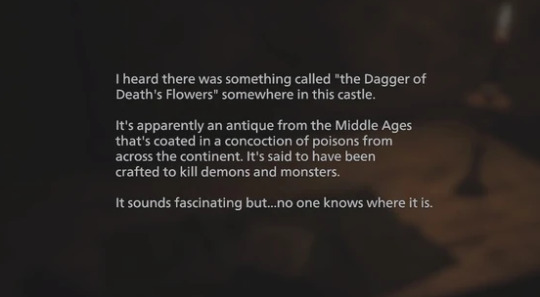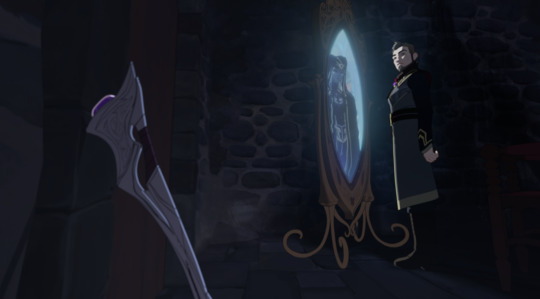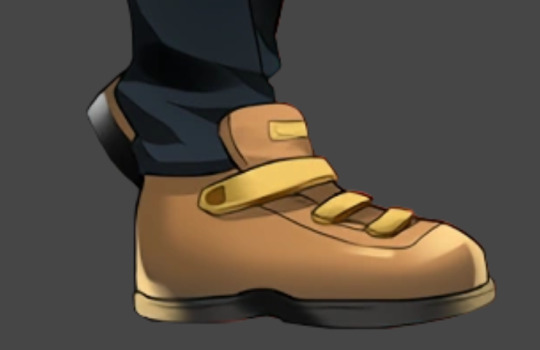#asset analysis
Explore tagged Tumblr posts
Text

Defect Elimination Management And Bad Actor Analysis.
Maintaining asset integrity, maximising performance, and reaching peak production outcomes all depend on effective defect elimination management.
The difficulties of locating, comprehending, and resolving asset flaws will be examined in this article, with a focus on the significance of having a complete awareness of their nature, implications, and possible outcomes.
The significance of maintenance departments creating a framework for integrating defect elimination and bad actor analysis into their proactive maintenance strategies, enabling them to make more informed decisions, becomes clear when we delve into the subtleties of defect analysis.
Defects in an asset are characterised as flaws, inadequacies, or departures from standard operating characteristics or design specifications.
The kind of defect, where it is located on the assembly of the asset, and what happens when it exists determine how one defect impacts the performance of the asset as a whole.
For example, a minor corrosion patch on a panel that is readily replaceable and does not pose a structural risk to the asset overall is unlikely to have an adverse effect on the asset's longevity, performance, or safety.
Effective Defect Elimination Management is critical for maintaining asset integrity, optimizing performance, and achieving peak production results. It involves identifying, understanding, and addressing asset defects systematically.
Understanding asset defects requires accurate identification and comprehensive documentation in the CMMS, including risk assessments that evaluate both the consequence and likelihood of defects leading to failures.
Defect Elimination Management (DEM) is a comprehensive approach that goes beyond traditional maintenance practices, focusing on root cause analysis and implementing long-term solutions to prevent defect recurrence.
"Bad Actors" in defect elimination refer to equipment, systems, or components that consistently underperform, require frequent maintenance, or cause repeated operational reliability or quality issues.
Advanced diagnostic tools and technologies, such as vibration analysis systems, infrared thermography, and AI-based analytics, have transformed the way asset defects are identified and managed.
Quality and timely repairs and clear business processes for managing defects are crucial, along with maintaining quality maintenance history data to provide valuable insights for future defect elimination processes.
To learn more, you can read my article via this link: Defect Elimination Management - CMMS Success
#defect elimination#defect management#bad actor analysis#maintenance management#asset reliability#asset performance#value driven maintenance#asset analysis
0 notes
Text
Thinking about Aaravos and how steadily he orchestrates artificial conflicts. This is nothing new — all the framing and dialogue in 2x09 indicates that it's his idea to send the smoke Moonshadow assassins after the other heads of state, and make it look like Xadia sent them > the internal threat that is Viren but I think 7x02 with Terry is an even better example.
Aaravos is the one who weighs in and tells Claudia that they can't tell Terry about the map... but why, exactly? At this point, what reason does Claudia in particular have to think 1) Terry would be bothered he's the only one who can see it, or 2) wouldn't cheerfully offer to help precisely because of that reason.
Simply put, nothing... except, as 6x01 establishes, her fear that Terry will leave her despite all the evidence to the contrary: "But you're never going to leave me, because I'm leaving you first." And just like how in 6x01, Claudia chooses to leave to protect herself first and foremost, we see her do the same thing again here in 7x02.
Aaravos tells her that they should withhold the information, implying that Terry would refuse or reject them if they don't, hitting upon precisely what Claudia already fears deep down. Whether it's because there's grain of truth in it that she already senses — Terry does indeed leave her when her behaviour/choices become too opposed to his own worldview / sense of self — or because it's a projection of her own repressed understanding that what she's doing isn't necessarily 'Good' anymore, who's to say. But either way, it sticks, and she follows Aaravos' lead.
But Aaravos orchestrates two deceptions, both being ones Terry might not have liked (the graveyard might've thrown him, but he also might've been relieved the unicorns were 'already dead'; the dead mama bird also may have bothered him, but it would've been outside of his control) but probably would've gone along with. It was the fact that they lied to him, and made him complicit in something against his consent ("She used me") that made him snap.
Because Aaravos needed Terry to lead them to the Garden just as much as he needed Terry to leave, because despite Terry's willingness to go along with terrible things for a Good Reason, Aaravos (and Claudia) are increasingly aware that their reasons are not ones Terry would classify as such. He identifies Aaravos' love as twisted beyond recognition in 6x09; he's hesitant about their inversion plans and the chaos it'd wrought even before their deceptions came to light. He's been able to sway or deter Claudia in the past (4x09, 5x06), and Aaravos can't hav that.
The ironic thing, perhaps, that in forcibly taking Terry's true heart from him, Aaravos leaves Terry fundamentally changed and subsequently much more dangerous. Would a Terry with his True Heart been willing to go along with the illusion plan? Or is precisely because Terry has to had to face that the world is complicated, and that Claudia might be horrible while still someone he loves, that deception is okay because it's for a Good Reason?
Because just as Aaravos orchestrates artificial conflict made manifest, Terry and co. create artificial reconciliation, and I think that's so fucking fascinating.
#tdp terry#terry#tdp#the dragon prince#arc 2#clauderry#sparklepuff squad#terry aaravos foils u are beautiful to me#asset#plus terry hi terry#tdp aaravos#s7#also of course ties back into ezran's speech: 'i ignored something that was True. i denied something that is undeniable. we are Angry...#we can't ignore that or pretend it will go away'#analysis series#sort of#analysis#mini meta
56 notes
·
View notes
Text
A thought I have pretty often but don’t have the brain to properly express is the fact that between the Girlymatsu’s and the regular matsu’s the only one who doesn’t share her signature color with her counter part is Osoko.

Like obviously it’s in the back of her intro card, and it’s Osoko so we know red is supposed to be her color.
She wears red in all the added merch and bonus content too. Off the top of my head there’s the Jyushimatsu dolphin episode, Tabimatsu, and hesokuri wars. All of which she wears red unless it’s a special set or she changes back into her work uniform.

It could really be nothing, but it always kind of threw me off. All the other girls get their signature color, why not Osoko?
Even if it’s in a subtle way they could’ve done it. Like with the pine pattern on ichiko’s dress or Jyshiko’s bright blonde hair and colored contacts.
Osoko’s makeup is more pink than it is red. So where’d her red go? I had a few thoughts on this so I’m gonna spit some shit.
1. Shes trying to blend in
In the episode she’s introduced in, she gives this big talk about how woman are supposed to be. Being independent, knowing when not to let other men pay for you, being young and approachable. She says all this but so easily snaps the next second. My only guess for why she snaps so quick is because she does that with friends.
With her friends Osoko has no problems being angry, making faces, yelling at them, etc. We don’t know how she is outside of her friend group, but from the way she describes herself it doesn’t seem like she acts the same around everyone.
Osoko is a working woman, she has to be all those things to survive the work place. Bold, but not too bold. Red is a very bold color.
Red lipstick is mature, but it also might hint at promiscuity for some older folk and people who like to talk shit. Meanwhile pink is a more cuter and toned down version of red, that’s why Osoko wears it as makeup instead. She wants to come off as light and fun and cute when that’s not who she really is.
2. She wants to seem younger
It’s brought up a couple times and the show kind of hints at it, but Osoko and Karako are supposed to be the older so believe.
They dress more mature and scold the others for being immature, and the comment jyushiko makes about them being old and unable to have children looks like it seriously pisses them off.
Osoko talks about youth a lot in her first episode, especially about how it makes her seem cuter. You’d think it would be a Todoko thing, but Osoko mentions it more than once when she talks. Meaning being cute and young (compared to her older male coworkers) instead of being headstrong or beautiful, is important to her.

Karako wears red heals and red lipstick but I think that’s just her style. She is bold, her personality is loud and just like how Karamatsu likes wearing shades and leather jackets to seem like a cool guy, Karako probably wears red to show maturity and maybe even a bit of sensuality.
Meanwhile Osoko, who doesn’t like the fact that she’s getting older, wears a more youthful color. Being pink. Even putting it on her cheeks to add to the youthful look.
3. Identity crisis
Pretty much everyone knows about Osomatsu’s identity issues. He very obviously has no personality of his own and it shows- mainly in the fact that while everyone has their own casual outfits that show off their identity, Osomatsu still wears the family symbol on his plain red hoodie.
I don’t think the girlymatsu’s are supposed to be sisters, they call each other friends and have never been mentioned to be related. They are all very visually distinct from each other, and their personalities are on full display all the time in just how they dress.
There would be no need for the girlymatsu’s to wear distinct colors because there would be no need to differentiate them from each other.
The show does it anyway, obviously, because fuck it why not it’s cute- but again, Osoko doesn’t.
It could be because, like Osomatsu, Osoko has no idea who she truly is. She pours herself into this older sister persona to lure men in (her words), but she’s loud and crude and judgmental when separated from that.
Just like how Osomatsu makes his family his identity, I think Osoko makes work her identity. She wears her work clothes out and about, even when she’s on vacation. In season 2 when she dresses out of her wet suit she’s in her uniform again- and we know nothing about her personal life, not even in the small tidbits we get from the other characters.
I truly think identity issues is something every version of Osomatsu is faced with. Even if it’s not that, idk I just think it’s interesting. If you made it this far, kiss kiss.
Live laugh love Osoko.
#osomatsu san#fandom#ososan#osoko#girlymatsu#osomatsu san analysis#does this count as an analysis???#I was just kind of going through a bunch of assets mainly Heo wars and Tabi and I noticed like-#most of the boys keep their signature color but specifically Osomatsu will be the odd one out#like they don’t always keep all the colors but they’ll make the effort to put it in subtly#except for Osomatsu who just wears black or gray#that got me thinking about the girlymatsu’s and their color significance#as you can see I went down the rabbit hole#I’m tempted to do more posts about who the girlymatsu’s might be because just doing Osoko was fun#Me zooming in on Osoko’s face: The pink is pink because she likes pink#Ososan season 4#bring back my girls bring back all my girls
85 notes
·
View notes
Note
Hi! Do you have a resource for the Japanese text of Resident Evil Village? While I need to replay the game for environmental story telling, I noticed some changes during localization, some big ans others small. Namely the origin of the death flower dagger, or the “christianization” of certain pagan elements such as Nichola’s goddess, etc. I would like to maybe one day hyper focus on Donna’s region. I feel like one can infer much from what we’re given between her home to the path leading to it
The residentevil.fandom wiki, for all its flaws, does have Japanese versions of all the text documents (or at least all the ones I've checked)! You can find it under the 'original script' tab under the 'Transcript' section for any file. It's the one big advantage that wiki does have over the file list at evilresource.com, which I'd otherwise prefer.
Having spent so long going through the actual game files, I do also have text dumps of pretty much everything in the game. That includes a lot of shorter titles or descriptions that the wiki wouldn't have. But they're not the easiest to navigate, as they include EVERY language the game supports, and things aren't always ordered intuitively. There's also some unused content in there, which is interesting but not always easy to identify.
To the best of my knowledge there aren't many significant changes between the Japanese and English text, though there are certainly a few. I've talked about a few examples before: the RE7 text for Mia's Orders document does describe her job a little differently in the Japanese (though neither version calls her a scientist, and good god am I sick of people repeating that nonsense!) I brought up a few more in my post about the Four Lords: Japanese text for Dimitrescu specifies she's the daughter of a fallen noble, the information about some of Dimitrescu's and Donna's powers is framed a little differently in the Japanese, and Heisenberg seems to mock the very idea he's any real kind of noble in his diary. These stood out to me mostly because they're cases where the Japanese version explained things that weren't made more sense than the English, given the rest of the context of the game (give or take some individual interpretation ‒ my own Japanese is not much above fangirl-level, and machine translation is only ever so reliable).

The one other interesting change I'm aware of is that Miranda's diary has a little more information about the Cadou in the Japanese text, stating they're derived from a nematode worm. That arguably makes some sense, in that nematodes can be parasitic, and we do see wormlike tendrils emerging from some infected characters. But it explains nothing about how you combine a worm with the mould and get what looks like a deformed human foetus, let alone why the megamycete itself takes the same shape ‒ and it's still pretty hard to read the whole Cadou concept as much more than an ill-thought-out attempt to copy RE4's parasites into their pseudo-RE4-remake. I'd guess the fact it adds so little to our understanding of the Cadou may be why it's excluded from the English version. Possibly the inclusion flowed more naturally in the Japanese version than it does in English, or perhaps it was just missed by accident.
But since I hadn't seen either of your own examples before, naturally, I took a look into them!

From 'Rumours of a Dagger', it looks like the biggest difference is that while the Japanese says something about who created it ‒ "a delusional former head of the family" ‒ that detail is missing from the English version, is that what you're referring to? Interesting! I can see why it might've been dropped from the English, it's the kind of throwaway detail that doesn't really add anything important, and may not have flowed as naturally without a bigger restructure. But the image of a nutjob former lord of the castle, abusing his power to indulge his whims, gathering poisons from all over the world as part of some mad project ‒ that's evocative enough to create quite the image. Was he inspired to create it out of fear of village-mould-monsters like the demon from the relief on the castle gate, maybe? The Japanese version does seem to carry slightly more suggestion that the dagger was created in the castle too, which I didn't get from the English. Nice, and definitely intriguing!

On the Nichola's goddess thing, though ‒ it looks like the main discrepancy is that she's framed as 'Father Nichola's Angel' in the English, but 'Nichola's Goddess' (ニコラの女神像) in the Japanese? That's the kind of change that I'd be a little more leery of reading much into. Japanese does technically have a word for 'angel' (tenshi, 天使), but I've seen localisations translate '女神/megami/female goddess' as 'angel' before (and the reverse), because, well, we're in comparative religion territory now, and concepts overlap. The difference between a literal god or goddess and an angel or 'heavenly messenger' is going to be hazy at the best of times, and 'megami' carries feminine connotations where 'tenshi' doesn't, so may have been seen as more appropriate for the statue asset they used.

It's also worth noting that the model they used for the statue is actually all over the modern Resident Evil series, going back to RE7, mostly appearing as a bit of decorative kitsch in very-western settings where it's very definitely meant to be read as an angel is the traditional Christian sense (the Bakers sure wouldn't have pagan goddesses around their home!) Seriously, this thing haunts me ‒ I have found it in RE7, RE8, and the remakes of both RE2 and RE4. It's probably in RE3 somewhere too. So I'd read 'megami' as a poor translation of 'angel', rather than the other way around.

It's even in multiple places in the Winters' own home in RE8! No-one recycles assets like the RE series!

All that said though, this all comes with my usual big "I am NOT a fluent Japanese speaker" caveat, and if you want to take 'Nicola's Goddess' as evidence of a pagan religion in the village? Heck, why not? 'Megami' is still totally open to interpretation, and though most of the pre-Miranda imagery around the village is v. Christian (all the pictures of saints, etc), the village does still have a very pagan-coded fixation on goats, and we've also got at least one document referring to the locals as 'heathens'. I've suggested before that probably means a different denomination of Christians, rather than actual pagans, but it's certainly open to interpretation.
And in the same text, it's also interesting that '叔父ニコラ' or 'Oji/Uncle Nicola' has become 'Father Nichola' in translation. I'm not aware of any religious implications of 'Oji/Uncle', whereas 'Father' is very clearly Christian in context. Does that mean anything? Heck, IDK, if you want it to!
Speaking of localisation issues: as far as I can see, translations into languages other than English or Japanese have been done using the English version as a template, not the Japanese. This is based on the few times I've tried machine translation on those other languages from the text files, so we're not talking about a big sample here, but the results look pretty definitive. Most likely this is done for practical reasons: I'm sure it's easier to find translator for French, Spanish or German who can translate from English than from Japanese, but it's interesting that they seem to be taking the English version as 'definitive', even though the Japanese version consistently comes first in the text dumps. But either way, you're not likely to find 'confirmation' of the Japanese/English differences looking anywhere else ‒ if there are any significant differences between the English and other language versions, I haven't spotted them.
On another more general note, I am coming at all this with some real-world experience with the translation/localisation process in projects like these (I don't work in game development, but I am a programmer who's worked on major websites while language support was being added as a new feature), and the little I can tell you is that translating something of that scale can be a heckuva chaotic process. You don't want to leave all the translations to be done at the last minute before release, because it can be a huge job ‒ and I know Capcom has English-speaking staff, so getting things translated into English as they're written (or even written first in English and translated into Japanese) is bound to be a priority.
But at the same time, things get re-written all the time during development. Maybe we've changed our minds about some story or technical detail. Maybe we've spotted an error. Maybe the text is slightly too long. Which can be a major headache, if every minor change might need to be translated into multiple other languages, and/or checked by multiple different people to make sure it makes sense in context. A lot of minor details will also likely get dropped or embellished during the translation process, either due to misunderstandings or just because producing something which sounds natural in the target language is usually better than wording that is technically correct but linguistically awkward.
So tl;dr: small differences between localisations are bound to happen, and are absolutely grounds for over-analysis, if you're so inclined. Who knows what else might be buried in all those files?
#asks#Resident Evil Village#Resident Evil#reused assets#translations#look if you're not here for tl;dr over analysis I don't know what you're here for
16 notes
·
View notes
Text




I love the way they reuse assets.
#it's great#gives me more to talk about#poptropica#poptropica analysis#ace poptropica#sally score#abe poptropica#gamer guy poptropica#poptropicon island#lunar colony island#reality tv island#zomberry island#poptropica assets
7 notes
·
View notes
Text
I’m trying to think of what topics a 4th prime asset could cover, and one of the things that came to mind was rebellion/protest. That could tie in nicely with Mother Gooseberry wanting total freedom for her kids and Franco supporting the union, while still being distinct enough from the general themes and messages of the other prime assets. Depending on how it’s written the prime asset themself could be more aligned with Coyle if they follow their own code rather than a law.
I can imagine that the first trial would likely have to do with riots in the streets, and then second could include illegal but less harmful protest methods like wheatpasting or sabotaging equopment with targeting people. Finale would probably be having the protesters arguably doing nothing wrong other than going against Murkoff’s ideals and maybe disrupting traffic.
Still several other possibilities for themes a new prime asset could go along with, this is just what popped into my head first.
#outlast#outlast trials#the outlast trials#outlast trials gooseberry#ex pop#mother gooseberry#franco barbi#prime asset#trial environment#outlast trials franco barbi#outlast trials coyle#outlast theory#outlast fandom#game analysis#video game analysis
13 notes
·
View notes
Text
Used Voyant to analyze Retired Assets (my fic), prologue through the most recent chapter



9 notes
·
View notes
Text
youtube
#youtube#trump#ethereum#solana#xrp#eth#bitcoin news#donald trump#bitcoin analysis#crypto news today#crypto news#Bitcoin#Bitcoin Reserve#Digital Assets#Strategic Reserve#Trump Administration#Financial Technology#Cryptocurrency#Crypto Regulation#Cryptocurrency News#Financial News#news#xrp price prediction#fintech#bitcoin#trump crypto#white house#digital assets#Digital Assets Summit#politics
6 notes
·
View notes
Text
Outlast Trials mini-analysis
I think the reason for the sexual tones of the prime assets is the fact that your Reagent is being conditioned into being a paragon of 1950s American-Conservative values (on paper, atleast), mainly hating any sex in any non-missionary position that isn't for the purposes of reproduction. This is also shown in the pre-trial hallucinations often involving the reagent getting castrated and the goals of a lot of Trials, particularly the orphanage and toy factory one's.
The assets all represent a perversion of the 1950s Nuclear Family ideal, the father (Coyle), the mother (Gooseberry) and the son (Franco). Therefore I speculate the next prime will likely be a big sister or brother-figure.
#the outlast trials#mini analysis#analysis#symbolism#media analysis#prime asset#outlast#franco barbi#leland coyle#phyllis futterman#1950s#speculation#theory
16 notes
·
View notes
Text
Today on crackpot theories: Aaravos' making the world's worst grocery list of items for his Cosmic Council takeover, re: Claudia and the Sunforge staff
I was thinking about how both Claudia and the Sunforge staff are included in her intro, despite not really needing the staff to be (as far as we know, but bear with me for a moment).

Viren, for example, doesn't have any item in his intro, despite the fact that Aaravos clocked that he had the relic staff Immediately. This was one of the biggest indicators at the time that Ziard's staff was related to Aaravos (since we didn't know he was a 'great one' yet).


Callum has the cube (which we'll circle back to) in his intro, yes, but again that makes a bit more sense with the context we have. It's called the Key of Aaravos, of course it was going to be something in relation to Aaravos in the Startouch elf's head of "hehe play into my hands".
It does show a pattern, though, of Aaravos not just going after mages, but mages who specifically have the 'gifts'/objects he's left behind that he needs. He needs the Relic staff, at the very least, because it has the quasar diamond he left inside as a contingency plan seemingly just in case he was ever imprisoned since murder only temporarily delays him. The cube may be something he's been looking for for a while now.
So he adds Viren and Callum to his little collection, convenient pawns pulled in by lures, and then constructs two more grocery list items together in quick succession in S3:


I've pondered before about why have Luna Tenebris and Queen Aditi go missing at all, in terms of being part of his plan. On the one hand, it makes sense without really trying: taking out Luna de-stabilized the archdragons (who seem like the only real threat to his power) and he couldn't let Aditi stabilize them. That doesn't explain why he'd eat her, though, unless it was just for fun.
It also never entirely sat right to me that getting the Sun staff / orb from Lux Aurea was just about protecting the soldiers from dragon fire. It felt too short sighted, not for Viren maybe but for Aaravos, given that if the Sunfire elves hadn't gotten involved, the assault on the Storm Spire probably would've gone on without a hitch.
Season six did provide more context, though! If Aaravos knew there was a good chance that taking out Lux Aurea and de-stabilizing the royal family again would make it easier to manipulate and kill Sol Regem, I could see that being incentive enough. If he's waited a 1000+ years for his revenge on that dragon, what's a couple more?
But like I said... if Aaravos ate Aditi for a reason, which was nullified maybe by his 300 year imprisonment... Does he need to eventually eat the Sun orb too? (Or Claudia, as she's consumed by the corrupted light for a beautifully on the nose metaphor?)
The relic staff has seemingly served at least one of its main purposes for now, though perhaps the quasar diamond can continue to be used past the point of giving Aaravos a new body? And we know the cube is related to Aaravos' book, so he'll want both of those within his possession and likely, like Viren in Lux Aurea and in Katolis with Claudia, be brought right to him. But I wonder about the corrupted Sun staff
The simplest reasoning I could see is the Staff just symbolizing Claudia's attachment to Aaravos and dark magic, but given its inclusion in the pawn intro, I can't help but think there's more to it, anyway. Why have it specifically on Aaravos' grocery list of items to get if all he wanted to do was corrupt the Sun forge, after all?
#tdp aaravos#tdp#the dragon prince#tdp claudia#asset#pawns#analysis series#parallels#speculation#predictions#sort of#analysis#aaravos#claudia
85 notes
·
View notes
Text
Discover MARA Holdings' stock price forecast for 2025–2029, exploring its Bitcoin mining dominance, financial performance, and risks. #MARAHoldings #MARA #Bitcoinmining #stockpriceforecast #cryptostocks #digitalassets #investmentanalysis #stockvolatility
#best time to buy MARA stock#Bitcoin mining#Bitcoin mining investment#crypto stock forecast#crypto stocks#digital assets#how to invest in MARA Holdings#Investment#Investment Analysis#Investment Insights#MARA#MARA Bitcoin holdings strategy#MARA Holdings#MARA Holdings financial performance#MARA stock price prediction 2025#Stock Forecast#Stock Insights#Stock Price Forecast#Stock volatility
2 notes
·
View notes
Text
Unlock the other 99% of your data - now ready for AI
New Post has been published on https://thedigitalinsider.com/unlock-the-other-99-of-your-data-now-ready-for-ai/
Unlock the other 99% of your data - now ready for AI
For decades, companies of all sizes have recognized that the data available to them holds significant value, for improving user and customer experiences and for developing strategic plans based on empirical evidence.
As AI becomes increasingly accessible and practical for real-world business applications, the potential value of available data has grown exponentially. Successfully adopting AI requires significant effort in data collection, curation, and preprocessing. Moreover, important aspects such as data governance, privacy, anonymization, regulatory compliance, and security must be addressed carefully from the outset.
In a conversation with Henrique Lemes, Americas Data Platform Leader at IBM, we explored the challenges enterprises face in implementing practical AI in a range of use cases. We began by examining the nature of data itself, its various types, and its role in enabling effective AI-powered applications.
Henrique highlighted that referring to all enterprise information simply as ‘data’ understates its complexity. The modern enterprise navigates a fragmented landscape of diverse data types and inconsistent quality, particularly between structured and unstructured sources.
In simple terms, structured data refers to information that is organized in a standardized and easily searchable format, one that enables efficient processing and analysis by software systems.
Unstructured data is information that does not follow a predefined format nor organizational model, making it more complex to process and analyze. Unlike structured data, it includes diverse formats like emails, social media posts, videos, images, documents, and audio files. While it lacks the clear organization of structured data, unstructured data holds valuable insights that, when effectively managed through advanced analytics and AI, can drive innovation and inform strategic business decisions.
Henrique stated, “Currently, less than 1% of enterprise data is utilized by generative AI, and over 90% of that data is unstructured, which directly affects trust and quality”.
The element of trust in terms of data is an important one. Decision-makers in an organization need firm belief (trust) that the information at their fingertips is complete, reliable, and properly obtained. But there is evidence that states less than half of data available to businesses is used for AI, with unstructured data often going ignored or sidelined due to the complexity of processing it and examining it for compliance – especially at scale.
To open the way to better decisions that are based on a fuller set of empirical data, the trickle of easily consumed information needs to be turned into a firehose. Automated ingestion is the answer in this respect, Henrique said, but the governance rules and data policies still must be applied – to unstructured and structured data alike.
Henrique set out the three processes that let enterprises leverage the inherent value of their data. “Firstly, ingestion at scale. It’s important to automate this process. Second, curation and data governance. And the third [is when] you make this available for generative AI. We achieve over 40% of ROI over any conventional RAG use-case.”
IBM provides a unified strategy, rooted in a deep understanding of the enterprise’s AI journey, combined with advanced software solutions and domain expertise. This enables organizations to efficiently and securely transform both structured and unstructured data into AI-ready assets, all within the boundaries of existing governance and compliance frameworks.
“We bring together the people, processes, and tools. It’s not inherently simple, but we simplify it by aligning all the essential resources,” he said.
As businesses scale and transform, the diversity and volume of their data increase. To keep up, AI data ingestion process must be both scalable and flexible.
“[Companies] encounter difficulties when scaling because their AI solutions were initially built for specific tasks. When they attempt to broaden their scope, they often aren’t ready, the data pipelines grow more complex, and managing unstructured data becomes essential. This drives an increased demand for effective data governance,” he said.
IBM’s approach is to thoroughly understand each client’s AI journey, creating a clear roadmap to achieve ROI through effective AI implementation. “We prioritize data accuracy, whether structured or unstructured, along with data ingestion, lineage, governance, compliance with industry-specific regulations, and the necessary observability. These capabilities enable our clients to scale across multiple use cases and fully capitalize on the value of their data,” Henrique said.
Like anything worthwhile in technology implementation, it takes time to put the right processes in place, gravitate to the right tools, and have the necessary vision of how any data solution might need to evolve.
IBM offers enterprises a range of options and tooling to enable AI workloads in even the most regulated industries, at any scale. With international banks, finance houses, and global multinationals among its client roster, there are few substitutes for Big Blue in this context.
To find out more about enabling data pipelines for AI that drive business and offer fast, significant ROI, head over to this page.
#ai#AI-powered#Americas#Analysis#Analytics#applications#approach#assets#audio#banks#Blue#Business#business applications#Companies#complexity#compliance#customer experiences#data#data collection#Data Governance#data ingestion#data pipelines#data platform#decision-makers#diversity#documents#emails#enterprise#Enterprises#finance
2 notes
·
View notes
Note
…Is Seven wearing velcro strap shoes???


These shoes are either Velcro or Button-Snaps. I imagine that's for the sake of convenience. He doesn't have time to waste tying his shoes during a mission, or when he needs to move from location to location without worrying about tripping over his laces. I imagine it's way easier on his hands, too, which no doubt have carpal tunnel from all the years spent repeating the same motion over and over again!
I think he values functionality over fashion in his everyday attire, even though he loves dressing up! The day he doesn't have to live in fear... that's the day when he wears shoes with laces. Saejoong is no longer a threat, nor is the agency in the RAE. Laces! The agency is gone and never coming back, but Saejoong is still in the Secret Ending! Velcro!
I think that is a neat character aspect... it shows a subtle means of his palpable paranoia, and a great accessibility tool.


#mod kait#ask#mystic messenger#anon#mysme#mysticmessenger#mm#saeyoung choi#choi saeyoung#luciel choi#choi luciel#707#seven#seven mystic messenger#seven mysme#seven mm#There is only one other photo in this game to dispute this theory#and it's a common gallery image of him playing the Nintendo DS#but i do think there might be missions where he wears laces as an asset#character analysis
46 notes
·
View notes
Text
🔮 Step into the 10th century! This medieval alchemical map of León & Asturias blends history, mysticism, and esoteric symbols. Inspired by Beatus manuscripts & Mappa Mundi, it unveils a world where geography met faith and magic.

View On WordPress
#ancient civilizations#blockchain collectibles#crypto art#cultural heritage#digital art#Ethereum NFTs#global history#historical analysis#historical events#historical figures#medieval times#modern history#NFT collectibles#NFT investment#NFT marketplace#rare digital assets#renaissance era#Solana NFTs#world history
2 notes
·
View notes
Text
As we step into 2025, the financial landscape is evolving with significant changes in cost-of-living adjustments (COLA) and asset management trends. This comprehensive guide from Unison Globus explores the economic shifts, legislative updates, and market dynamics that will shape the year ahead. Whether you're a financial professional, business owner, or individual investor, staying informed about these trends is crucial for effective financial planning and maximizing opportunities. Don't miss out on these essential insights! Visit Unison Globus to read the full blog and stay ahead of the curve in 2025.
#2025 financial outlook#Unison Globus#COLA adjustments#asset management trends#financial planning 2025#financial strategy 2025#market dynamics 2025#Unison Globus financial insights#Cost-of-Living Adjustments 2025#financial market analysis#business financial planning#individual investor trends 2025#2025 Financial Outlook#Asset Management
1 note
·
View note
Video
youtube
🔥 Tin Nóng: Cập Nhật Pi Network – 10-20 USD Mỗi Ngày Có Thành Tài Sản Cả...
#youtube#🔥 Hot News: Pi Network Update – Can $10-20 Per Day Become a Lifetime Asset? 🚀PiNetwork 🌟 In today's video we bring you a detailed analysi
0 notes